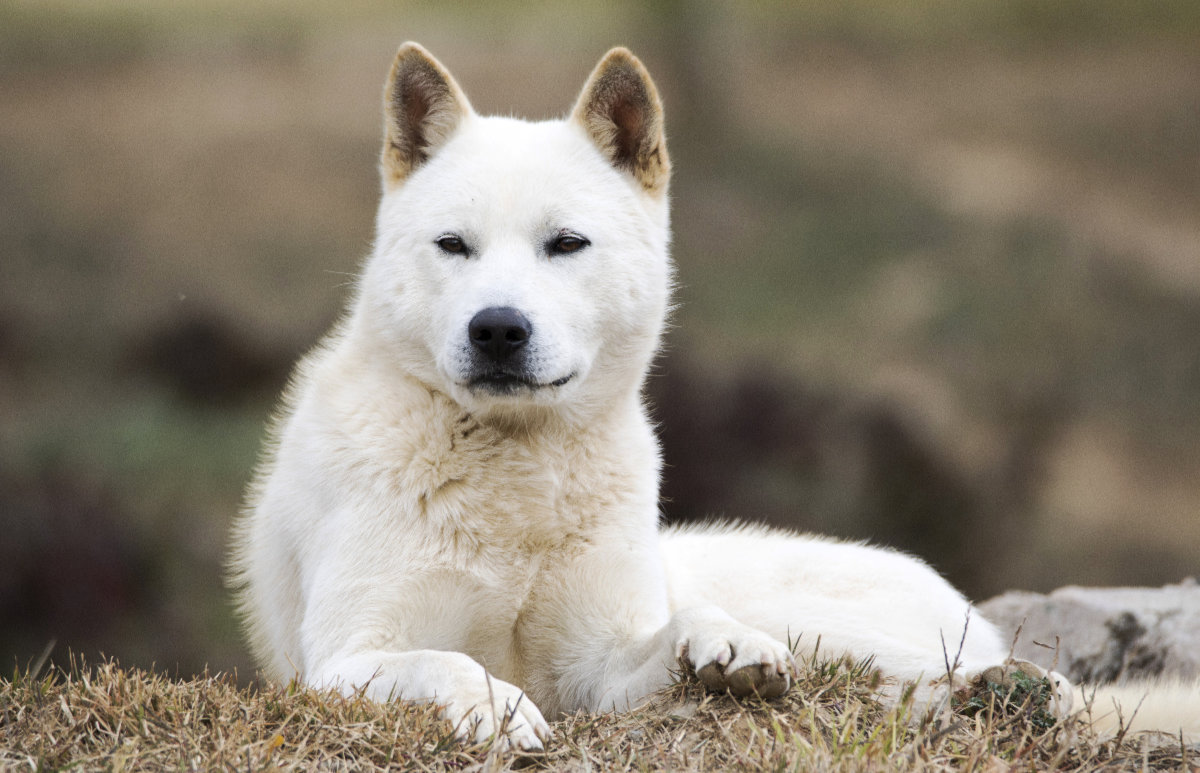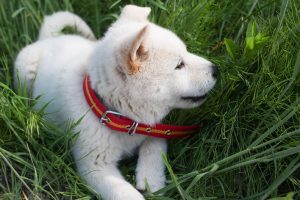
Korean Jindo – Utility

Image S.S.B:/Shutterstock.com
| Name | Korean Jindo - Utility |
|---|---|
| Size | Medium |
| Grooming | Weekly |
| Training | Slightly Challenging |
| Exercise | Daily / 1 hour + |
| Origins | Korea |
Jindo - The Original Korean Island Dog.
Looking for a friend for life? Then a Jindo is one to consider. These medium size dogs tend to bond strongly with their owner and they are renowned for their loyalty and protective nature. Originally from Jindo Island in South Korea, they are recognised as national treasures in their homeland and it is only recently that they have become available in Europe & North America. A Jindo is not a dog for the casual owner, needing plenty of companionship as well as frequent exercise. Although they do make good house dogs being fastidiously clean, the exercise needs mean that they are best suited to properties with gardens which allow an additional element. Similarly, they are not really family dogs being bonded to their original owner or trainer. If socialised from an early age this is less of an issue but still needs considering and we would not recommend one for a family with young children. Despite this, they do have plenty to offer a committed dog lover and they do make up for some of the issues by being low shedding and clean. Anyway if you are in the market for a dog of this type read on and see if they fit the bill.

Jindo puppies grow into fiercely loyal dogs.
Image: roollooralla/Shutterstock.com
Quick Overview
Name: Jindo -Utility Breed (UK Kennel Club)
Size: 16-23 inches (41-58 cm) tall fully grown
Weight: 35-40 lbs 16-18 kg
Grooming: Wire Haired/beginner dog owner level/hypoallergenic
Training: Not for the feint hearted. Best suited to a strong experienced dog owner.
Exercise: Lots think a good hour plus a day walking and a run around in the garden as the minimum.
Temperament: Loyal and Intelligent but aloof to strangers and potentially aggressive towards other animals.
Origins: South Korea
Lifespan: 12-15 years
They come in six different colours: white, red fawn, wolf grey, black, black and tan, and brindle and their coat is dense and soft with an undercoat which is shed a couple of times a year.
Origins
The Jindo takes its name from the Korean Island of Jindo which was isolated from mainland Korea until 1984 and as such the breed has remained largely unchanged for hundreds of years. It was originally bred as a hunting and or guard dog and to this day it retains elements of its wild dog origin, having a wolf-like appearance. In the past, they were also used in dog fights and given this they do retain a dominant attitude towards other dogs.
A Few Facts About The Jindo!
We wouldn’t be Five Minutes Spare if we didn’t throw some fun facts your way. Here are some of our favourite little snippets of information regarding them:
- Jindo Island where they originate from is the 3rd largest island in South Korea
- They were virtually unknown Outside of Korea until the late 1990s when the United Kennel Club recognised them the AKC did the same in 2008
- In 1962 it became Korean Natural Treasure #53 and they are protected under the Cultural Properties Protection Act
- In its homeland, they are called Jindo-Kae or Kyon which is written as 진돗개
- They have been tried as both rescue dogs and Police dogs but they proved unsuitable as they were too attached to their original trainers to focus on the tasks at hand.
Temperament
If you own and look after a Jindo then you would be hard pushed to find a more loyal and protective dog breed! Given this, they are not a great choice for people with young children, or if there are other dogs or small pets in the family environment. They also don't tend to make good second owner dogs as they seem to bond for life and there was a case in Korea where one was sold only for it to run away and make a 300km journey back to its original owner. They retain strong hunting instincts and will go after pretty much anything smaller and furry - not only other pets but wild animals too.
Training and Maintenance
Kind but firm is the order of the day when training a Jindo. They are pack dogs and as an owner, you need to be the leader. However, once they have accepted who is boss their initial stubbornness is soon overcome and being quite intelligent they soon learn basic commands.
They have double coats so expect some shedding on a seasonal basis. Otherwise, a good brush once a week or so will suffice. Jindo's like to be clean and they spend a fair bit of time grooming themselves in an almost cat-like manner. Which is just as well as most Jindo's don't like the water, which is possibly a little strange for an island-based hunting dog.
Feeding wise they are less tolerant of lower grade food than some breeds so aim for a high meat diet and if using prepared food look for one with little or no corn content.
Common Health Concerns
Purebred Jindo's are generally a healthy breed with few if any serious genetic problems. The most likely issue health-wise you would encounter with one is Thyroid Problems which manifest as Hypothyroidism (Underactive Thyroid). Fortunately, this is unlikely to be debilitating and is easily treated with oral medicine.
Where to buy A Jindo Puppy?
If you live in Korea this won't be a problem, however, in Europe and the US, they are not plentiful so expect to join a waiting list and pay four figures for one.
Five Minutes Spare
We have numerous other dog articles over on the Five Minutes Spare pages for those that love them as much as we do so please continue to browse or sign up to join our growing community.
